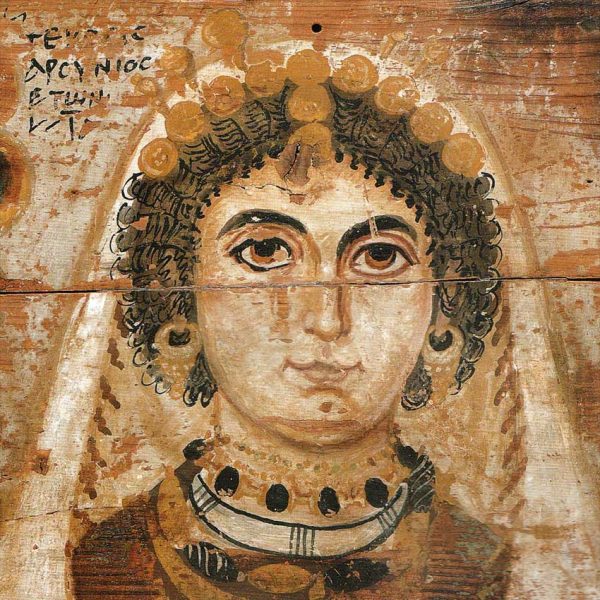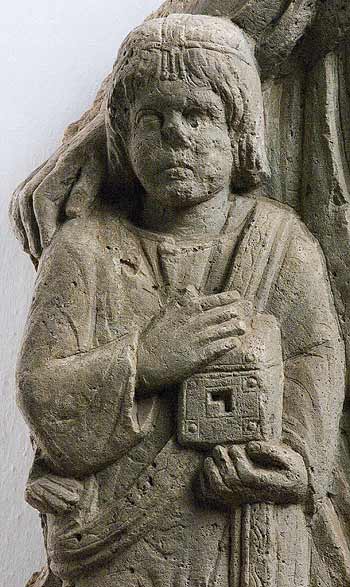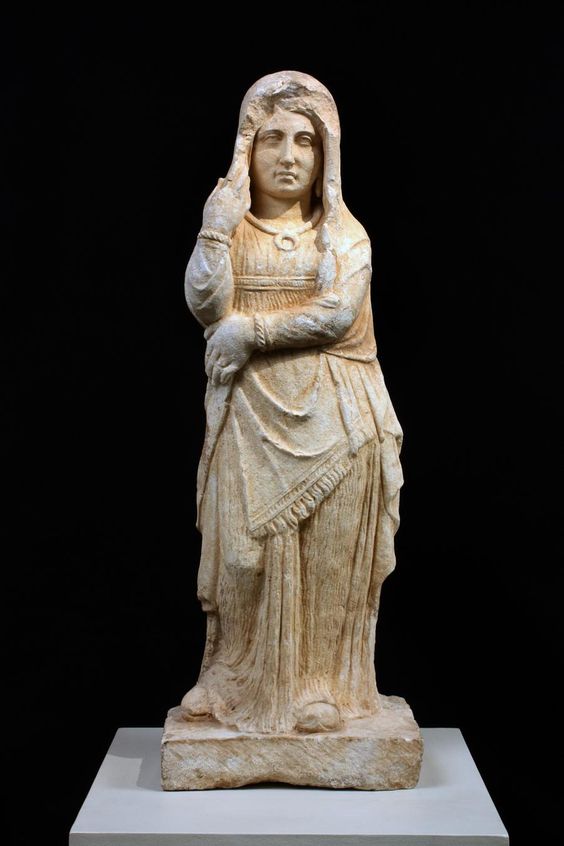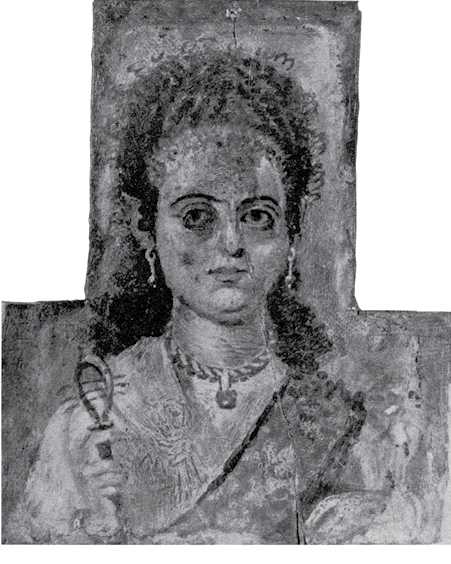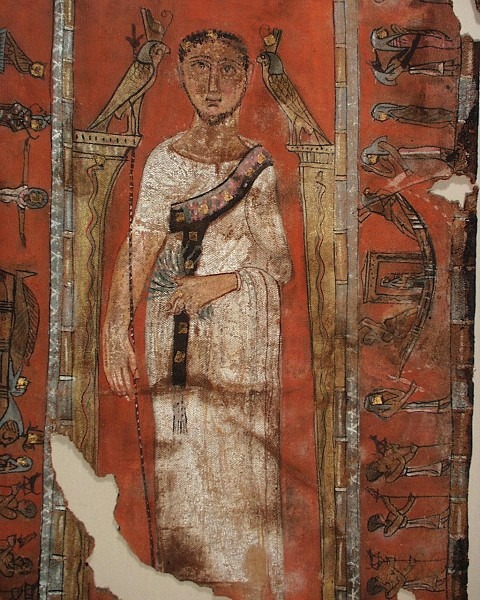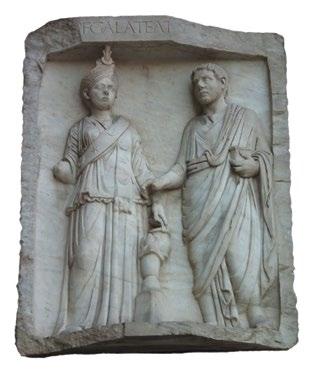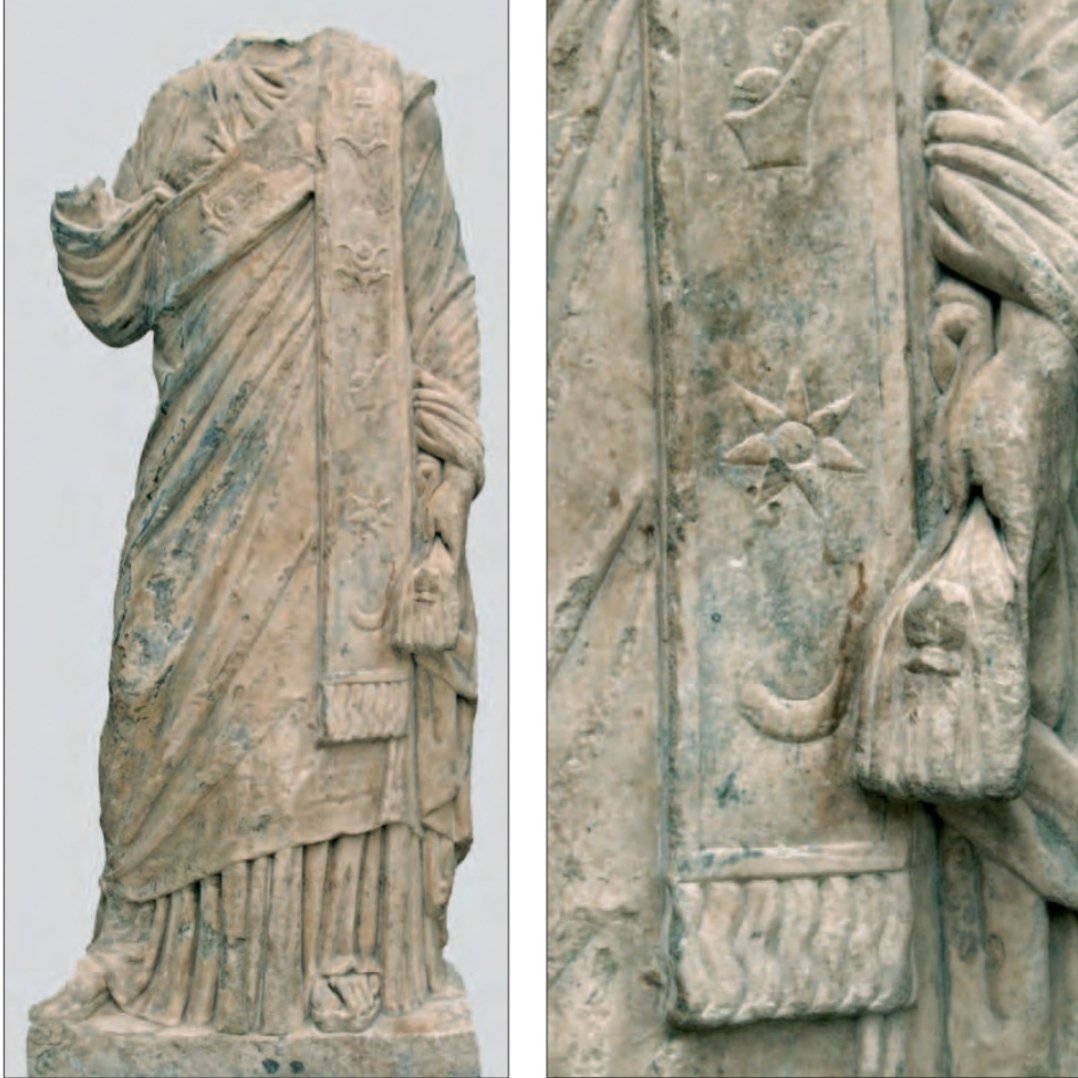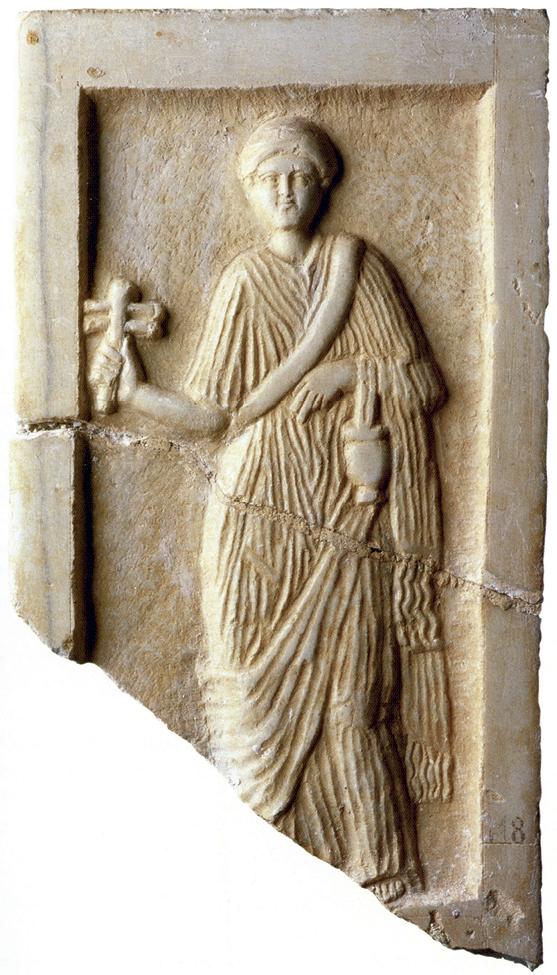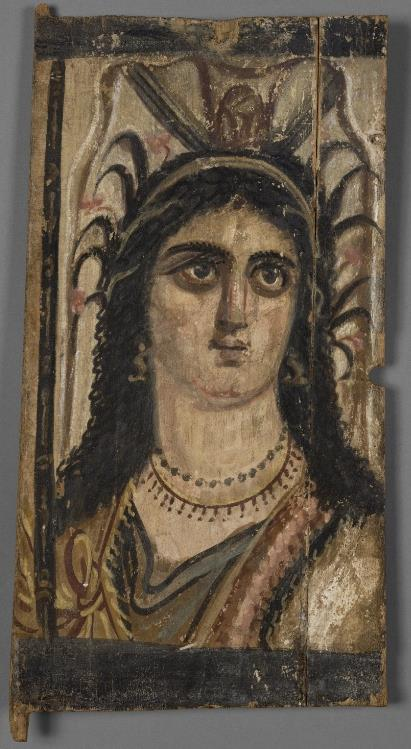

Isis, tempera on panel, 40 x 19 cm, late 2nd century CE, unknown provenience (Egypt),
J. Paul Getty Museum Inv. no. 74.AP.22.
“Her elaborate headdress and the characteristic “Isis knot” in her mantle identify the goddess Isis. The headdress combines floral elements with a central uraeus, all covered by a transparent veil. The goddess carries a staff on one shoulder and a wreath of pink flowers, like those seen on portraits of her worshippers, draped over the other.”
Literature:
Bilder von Göttern und Menschen der römischenKaiserzeit – eine kunsttechnische Betrachtung Cristina Thieme, Anna Rommel-Mayet und Luise Sand.
In: Inkarnat und Signifikanz Das menschliche Abbild in der Tafelmalerei von 200 bis 1250 im Mittelmeerraum academia.edu
“a “group” of Isis and Serapis flanking a square portrait of a mortal man. Recently this group – cataloged as a triptych by the museum upon its acquisition in 1974 – underwent an analytical update [published in “A Portrait of a Bearded Man Flanked by Isis and Serapis” published in Icon, Cult and Context (Cotsen, 2016), 79-89]. Past analytical work focused on understanding the materials and authenticity of the panels but had not presented new information about their ancient context or function. More recent organic analysis has revealed a number of different components assuring the ancient integrity and commonality of the panels but has also uncovered evidence of modern restoration in need of clarification.” [source]

A Painted Triptych from Roman Egypt. David L. Thompson https://www.jstor.org/stable/4166401


